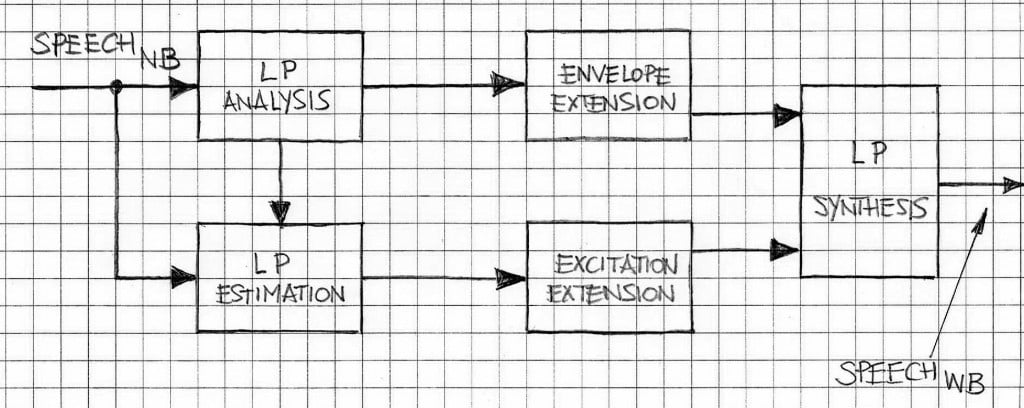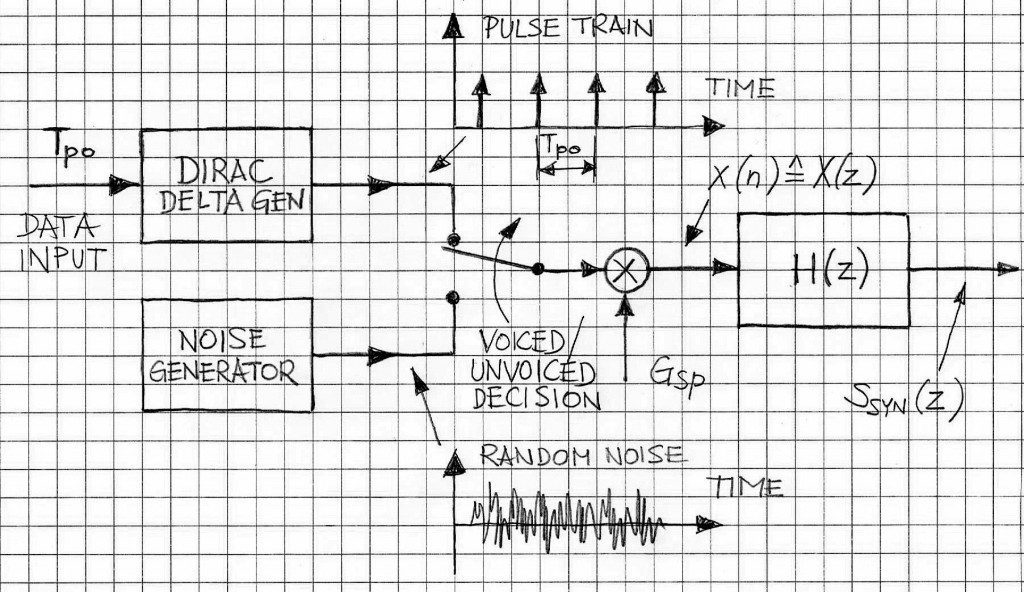In Telecommunication in general, bandwidth extension, BWE (also referred to as bandwidth expansion) relates to converting narrowband (NB) speech (as transmitted through the narrowband networks that support the bandwidth [300Hz 3400Hz]) into the wideband (WB) speech signals (the wideband frequency range is [150Hz, 7000Hz], approximately) and typically the focus of the WBE when converting speech signals from NB to WB is towards filling the upper portion of the WB (although some solutions address the extension at both ends of the WB).

The bandwidth extension methods and algorithms cover many approaches (such as linear prediction-based, cepstrum-based, spectral-envelope-based, to mention only the methods that are typically explored and used in practical applications) (cf.[1]). The applications of bandwidth extension go beyond Telecommunication. In this brief note we limit our focus to techniques used in converting NB to WB for application in Telecommunication.
One of the approaches that has gained attention and produced practically advantageous results is based on linear predictive coding (LPC) (or equivalent linear spectrum pair, LSP, and linear spectrum frequency, LSF) widely used in the low-bit-rate vocoders. The high-level view of the discrete model of speech production is shown in Figure 2. Tpo is referred to the pitch period and defines the time spacing between the pulses in the periodic excitation impulse train {δ(i-n ∙ Tpo), n=0,1,…} in the voiced speech segment generation. The gain factor Gsp controls the amplitude of the excitation signal. The human vocal tract and its operation are represented by the filtering process using the time-varying autoregressive synthesis filter H(z) excited by the impulse train.

- appending the higher frequency components using the LP code book for the purpose of the envelope extension – in this process the pitch detection is performed and then, by appending the higher frequencies (according to a specific and pre-defined technique), the voiced portions of the synthesized speech are transformed from the NB to the WB, and
- excitation extension towards the increasing the bandwidth of the signal (for the unvoiced parts).
While the primary purpose of the wideband extension is to enhance the speech by adding (or restoring ) the missing components in the higher frequency band for the purpose of achieving improved speech intelligibility as well as better audible recognition of speakers/users of the voice links, other important applications are explored. For example, [3], addresses the concept of BWE in the context of wind-noise reduction (i.e., one microphone).
VOCAL’s Speech Enhancement solutions have been deployed worldwide. These solutions are portable to any typical digital signal processor or general-purpose processor. The Voice Enhancement solutions can include custom add-on components as well as BWE. Contact us to discuss your application with our engineering staff.
More Information
References
- Bandwidth Extension Method Based on Spectral Envelope Estimation, Hang,B., et el., J. OF MULTIMEDIA, VOL. 6, NO. 3, JUNE 2011
- Bandwidth Expansion of Narrowband Speech using Linear Prediction , Andersen, B.B., et el., Aalborg University, December 17th. 2004
- Single Microphone Wind Noise Reduction Using Techniques of Artificial Bandwidth Extension, Nelke, C.M., et el, 20th European Signal Processing Conference (EUSIPCO 2012), August 27 – 31, 2012